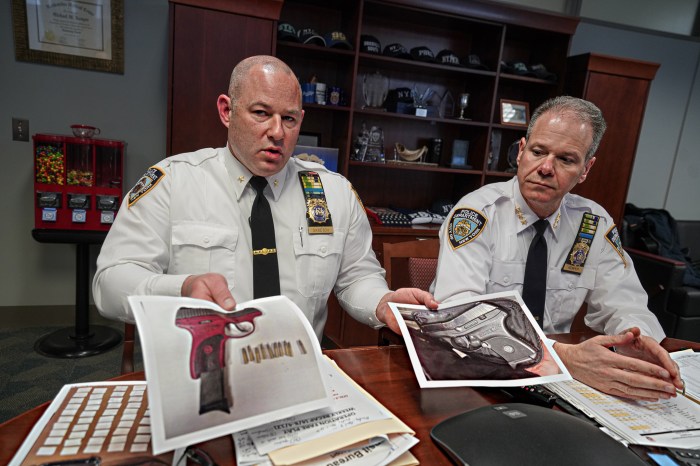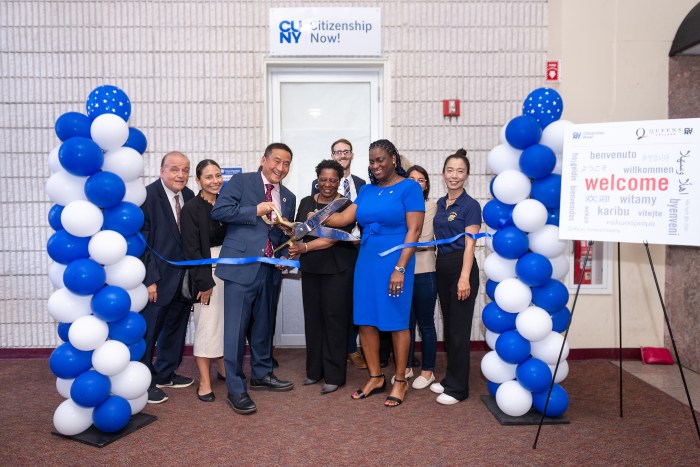New York will focus on building bike infrastructure in 10 newly identified districts with high rates of cycling deaths and injuries, officials said Monday.
The efforts are part of a five-pronged action plan published Monday, which outlines plans ranging from new legislation to improved street engineering to address the city’s nearly 150 percent increase in daily cycling between 2006 and 2015, from 66 million trips per year to 164 million.
“We’ve seen for the first time, a street not too far from here, Hoyt Street, where in the [evening] rush hour you are seeing more cyclists on the roadway than you’re seeing automobiles, which is a real change of pace here in New York,” said Polly Trottenberg, Department of Transportation commissioner, at a news conference near the Brooklyn entrance to the Brooklyn Bridge.
The de Blasio administration has set a goal to build at least 50 miles of bike lanes per year, and the new action plan will help guide that roll out through 2022 — with 75 of the those bike lane miles to be built in one of 10 priority districts. The districts encompass 14 percent of the city’s bike lane network and were home to nearly a quarter of all cycling deaths and serious injuries between 2010 and 2014.
The plan will also shape the administration’s framework for street engineering, research, traffic enforcement, legislative policy and educational programs and involves the DOT, police and health departments. It’s grounded in city data illustrating that more bike infrastructure encourages more cycling and those both improve street safety.
“It’s believed that in cycling that as you get more cyclists on a roadway, motorists start to notice them more and it becomes a real virtuous circle,” Trottenberg said. “As cycling has risen here in New York, the number of fatalities has stayed flat.”
Cyclist fatality rates, measured in the number of deaths per 100 million bike trips, has dropped by 71 percent when comparing five-year windows from 1996 through 2015. And those deaths typically occur where there are no bike lanes or in intersections, according to the report.
One component of the action plan is a new study, to be published early next year, on the impacts of different street intersection designs to help make recommendations for safety improvements. Others include reworking parking and loading restrictions on streets with bike lanes to avoid conflict with vehicles and using targeted police enforcement to combat top driver actions that cause cycling injuries.
Advocates praised the progress the city has made in improving bike safety, but want the administration to make a greater pledge to build more parking-protected bike lanes — believed to be the safest bike lane design. (The city aims to build one mile of protected bike lanes for every five miles of lanes it builds.)
The city faces stiff opposition in certain community boards where residents argue that Citi Bike stations limit parking options and bike lanes add to congestion. Paul Steely White, executive director of Transportation Alternatives, believes those concerns should come after street safety. He criticized the city for its tendency to bow to those reluctant community boards.
“There’s no debate as to whether or not these modern designs work,” White said, “now the city must build them as a matter of course.”

















